

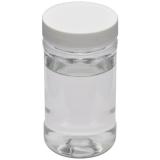 The correct method using fixing agents
Non-formaldehyde fixing agent property is evaluated according to the fixing result of dyed fabric: Dyeing and sampling→ fixing → the evaluation on the fixing agent: ①color changes in hue ②Wet fas...
view
The correct method using fixing agents
Non-formaldehyde fixing agent property is evaluated according to the fixing result of dyed fabric: Dyeing and sampling→ fixing → the evaluation on the fixing agent: ①color changes in hue ②Wet fas...
view
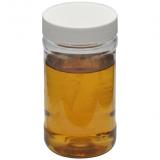 Cationic Fixing Agent
Cationic fixing agent mainly through the cation and dye molecules in the anion group formation of ionic bonding, thereby sealing the water-soluble groups, to improve the wet treatment fastness. This k...
view
Cationic Fixing Agent
Cationic fixing agent mainly through the cation and dye molecules in the anion group formation of ionic bonding, thereby sealing the water-soluble groups, to improve the wet treatment fastness. This k...
view
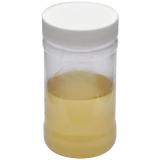 Fixing Agent for Polyester DG-1
To prevent the dyeing fabric deformation, most synthetic fiber before dyeing should prior to finalize the design (temperature 193 ℃ ~ 200 ℃). But because of the oxygen in air under the light catalys...
view
Fixing Agent for Polyester DG-1
To prevent the dyeing fabric deformation, most synthetic fiber before dyeing should prior to finalize the design (temperature 193 ℃ ~ 200 ℃). But because of the oxygen in air under the light catalys...
view
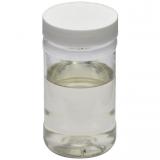 The Application Analysis of Dye-Fixing Agent In The Process of Fabric Dyeing Process
Lead: Some dyes can dye bright-colored fabrics and the direct dye, acid dye and other anionic water-soluble dye have wild chromatogram. But the water-soluble groups on the dyes makes the bad wet fast...
view
The Application Analysis of Dye-Fixing Agent In The Process of Fabric Dyeing Process
Lead: Some dyes can dye bright-colored fabrics and the direct dye, acid dye and other anionic water-soluble dye have wild chromatogram. But the water-soluble groups on the dyes makes the bad wet fast...
view
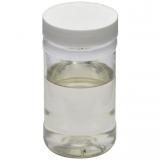 Sulfur Dye Fixing Agent HT-LG26
【Brief information 】Sulfur dye fixing agent is a formaldehyde-free fixing agent, mainly used in post-treatment of vulcanized dye fabrics and obviously all fabrics’ fastness.【Main composition】--Po...
view
Sulfur Dye Fixing Agent HT-LG26
【Brief information 】Sulfur dye fixing agent is a formaldehyde-free fixing agent, mainly used in post-treatment of vulcanized dye fabrics and obviously all fabrics’ fastness.【Main composition】--Po...
view
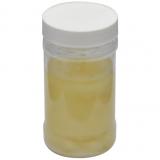 Using PRECAUTIONS For Dye-Fixing Agent in the Process of Water Slurry Printing
1. Water Slurry Preparationthe key for preparing water slurry is adhesive agent.When we prepare dark color slurry, we should choose high solid good adhesive agent, and matching with hand-feeling modul...
view
Using PRECAUTIONS For Dye-Fixing Agent in the Process of Water Slurry Printing
1. Water Slurry Preparationthe key for preparing water slurry is adhesive agent.When we prepare dark color slurry, we should choose high solid good adhesive agent, and matching with hand-feeling modul...
view
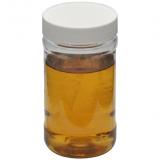 The Brief Introduction Of Waterborne Polyurethane Dye-Fixing Agent Working Principle And Its Develop
Waterborne polyurethane possess good film covering property in itself. If we introduce cationic chain extender at the time of compounding polyurethane, we can get cationic waterborne polyurethanne. T...
view
The Brief Introduction Of Waterborne Polyurethane Dye-Fixing Agent Working Principle And Its Develop
Waterborne polyurethane possess good film covering property in itself. If we introduce cationic chain extender at the time of compounding polyurethane, we can get cationic waterborne polyurethanne. T...
view
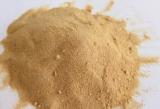 Different Kinds Of High-Concentration Dye-Fixing Agent And Their Property
It will improve the wet fastness of nylon and its blended fabrics after dyeing and printing . It will improve the nylon fabrics color fastness at continuous dyeing . And it have less impact on the gl...
view
Different Kinds Of High-Concentration Dye-Fixing Agent And Their Property
It will improve the wet fastness of nylon and its blended fabrics after dyeing and printing . It will improve the nylon fabrics color fastness at continuous dyeing . And it have less impact on the gl...
view
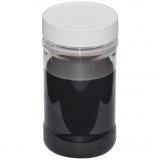 Fixing Agent for Acid Dyes GTR
[Main composition] Sulphonate condensation polymer.[General properties] Appearance: red brown liquidIonicity: anionicpH: 3.5-4.5Solubility:easily soluble in waterStability: stable to acid, alkali, ele...
view
Fixing Agent for Acid Dyes GTR
[Main composition] Sulphonate condensation polymer.[General properties] Appearance: red brown liquidIonicity: anionicpH: 3.5-4.5Solubility:easily soluble in waterStability: stable to acid, alkali, ele...
view
 Fixing Agent for Sulfur Dyes LG26
Sulfur dye fixing agent is formaldehyde-free fixing agent, mainly use in post-treatment of vulcanized dye fabrics and obviously all fabrics’ fastness.【Main composition】Polycation polyamine compound...
view
Fixing Agent for Sulfur Dyes LG26
Sulfur dye fixing agent is formaldehyde-free fixing agent, mainly use in post-treatment of vulcanized dye fabrics and obviously all fabrics’ fastness.【Main composition】Polycation polyamine compound...
view
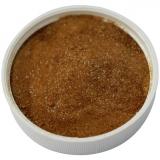 Fixing Powder for Acid Dyes NRS
【Main composition】 Sulphonate condensation polymer.【General properties】 Appearance:powerpH:7-9Solubility:easily soluble in waterStability:stable to alkali, electrolytes, hard water and weak acid【...
view
Fixing Powder for Acid Dyes NRS
【Main composition】 Sulphonate condensation polymer.【General properties】 Appearance:powerpH:7-9Solubility:easily soluble in waterStability:stable to alkali, electrolytes, hard water and weak acid【...
view
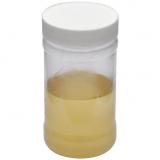 Hydrophilic Formaldehyde Free Fixing Agent for Polyester QG-200
[Brief information ] Hydrophilic formaldehyde free fixing agent for reactive dyeing that obviously improves various fabric fastness. [Main composition ] --Polycationic compound.[General properties ] -...
view
Hydrophilic Formaldehyde Free Fixing Agent for Polyester QG-200
[Brief information ] Hydrophilic formaldehyde free fixing agent for reactive dyeing that obviously improves various fabric fastness. [Main composition ] --Polycationic compound.[General properties ] -...
view
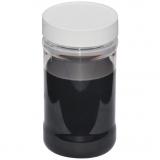 Fixing Agent for Acid Dyes SP
Fixing agent for acid dyes has outstanding acid resistance for easy operation. Especially for wool, nylon, silk and leather with anionic dye-stuffs (acid/metal complex dye-stuffs) while washing, perspiration, light, chlorine and bleeding fastness can be s
view
Fixing Agent for Acid Dyes SP
Fixing agent for acid dyes has outstanding acid resistance for easy operation. Especially for wool, nylon, silk and leather with anionic dye-stuffs (acid/metal complex dye-stuffs) while washing, perspiration, light, chlorine and bleeding fastness can be s
view
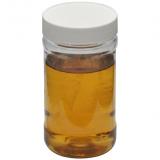 Formaldehyde-free Fixing Agent WPB
Formaldehyde free fixing agent for reactive, direct and sulfur dyestuffs that obviously improves various fabric fastness.【Main composition】 Polycationic compound.【General properties】 Appearance: L...
view
Formaldehyde-free Fixing Agent WPB
Formaldehyde free fixing agent for reactive, direct and sulfur dyestuffs that obviously improves various fabric fastness.【Main composition】 Polycationic compound.【General properties】 Appearance: L...
view